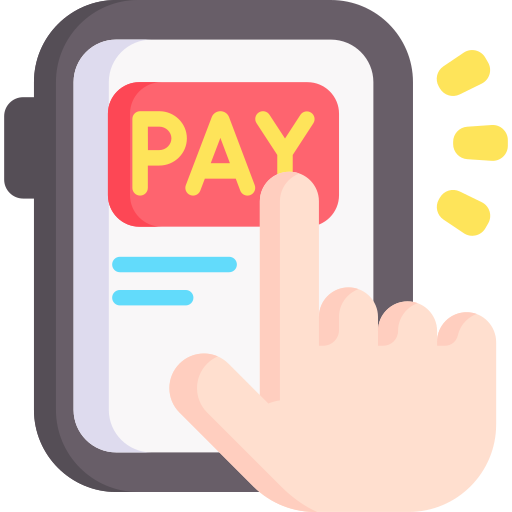Pay-Per-Click Advertising P P C
In today’s digital age, businesses are constantly seeking innovative methods to amplify their online presence. One such method that has gained significant traction is Pay-Per-Click Advertising, commonly known as PPC. This dynamic form of online advertising serves as a potent mechanism for driving targeted traffic to websites, enhancing brand visibility, and ultimately, boosting sales. Let’s delve deeper into the intricacies of PPC and explore why it’s an indispensable component of search engine marketing.
What is Pay-Per-Click Advertising?

Pay-Per-Click Advertising is a strategic model of internet marketing where advertisers are charged a fee each time their ad is clicked. Instead of organically earning visits, PPC offers a shortcut to gaining visibility by essentially purchasing visits. This model allows businesses to capture the attention of potential customers actively seeking products or services similar to theirs.
The Mechanics of PPC
At the core of PPC are major search engines like Google and Bing, which provide a platform for businesses to showcase their ads prominently in search results. Advertisers engage in a bidding process for specific keywords pertinent to their business. When users search using these keywords, the search engine displays the most relevant ads at the top of the page. This system ensures that ads reach users with a genuine interest in the offerings.
The Simplicity and Flexibility of PPC
One of the distinguishing features of PPC is its straightforward nature and adaptability. Advertisers have the liberty to set their budget, ensuring that they only incur costs when their ad is clicked. This pay-as-you-go approach maximizes the efficiency of advertising budgets by ensuring expenditure is directly linked to engagement.
The Strategic Advantage of PPC
Beyond its basic operation, PPC offers a strategic edge by aligning with the user’s intent. By targeting specific keywords, businesses can align their ads with the precise needs of consumers. This alignment not only enhances the likelihood of clicks but also increases the probability of conversion, making PPC a strategic asset in digital marketing.
Benefits of Pay-Per-Click Advertising

Precision Targeting
PPC stands out for its unparalleled ability to target specific demographics. Advertisers can customize their campaigns to reach audiences based on a multitude of factors, including geographical location, language preferences, and the type of device used. This precision ensures that ads are visible to the right audience segments at optimal times, maximizing engagement.
Financial Efficiency
Traditional advertising methods often come with hefty price tags and uncertain returns. PPC, on the other hand, offers a cost-effective alternative that allows businesses to control their financial outlay. By only paying for actual engagement, businesses can ensure their advertising budget is utilized judiciously. Additionally, detailed analytics provide insights into campaign performance, facilitating informed budgetary decisions.
Swift Results
In the fast-paced digital marketplace, time is of the essence. PPC campaigns offer the advantage of immediacy. Once a campaign is set up, ads can be displayed on search engines almost instantaneously, driving traffic and conversions with remarkable speed. This rapidity makes PPC an ideal choice for businesses aiming for quick market penetration.
Transparency and Measurability
One of the most compelling aspects of PPC is the wealth of data it provides. From click-through rates to conversion statistics, every facet of the campaign can be meticulously measured. This transparency empowers businesses to make data-driven decisions, continuously refining their strategies to optimize outcomes.
Setting Up a Successful PPC Campaign
Comprehensive Keyword Research
Keyword research is the cornerstone of a successful PPC campaign. Identifying the right keywords is vital for reaching the intended audience. Utilizing tools like Google’s Keyword Planner, businesses can discover relevant keywords with substantial search volumes. A balanced mix of short-tail and long-tail keywords ensures a broad yet targeted reach.
Crafting Engaging Ad Copy
The effectiveness of a PPC ad hinges on its copy. Ad copy should be engaging, precise, and aligned with the targeted keywords. Emphasizing the unique benefits of a product or service while incorporating a compelling call-to-action can significantly enhance click-through rates.
Creating Cohesive Landing Pages
After clicking an ad, users should be directed to a landing page that reflects the ad’s message. A cohesive landing page that provides essential information in a user-friendly format can greatly increase conversion rates. Ensuring consistency between the ad and the landing page enhances user experience and trust.
Continuous Monitoring and Optimization
Launching a PPC campaign is just the beginning. Ongoing monitoring is crucial to ensure sustained success. Analyzing performance data helps identify which keywords and ads yield the best results, guiding strategic adjustments. Experimenting with A/B testing for different ad copies and landing pages can also provide insights into audience preferences.
Common PPC Mistakes to Avoid
Neglecting Negative Keywords
In PPC, negative keywords play a critical role in preventing ads from appearing in irrelevant searches. Failing to manage negative keywords can result in unnecessary ad spend. Regularly reviewing search terms reports and updating negative keywords is essential for maintaining campaign efficiency.
Ignoring Mobile Optimization
As mobile device usage continues to rise, optimizing ads and landing pages for mobile users is imperative. Neglecting mobile optimization can limit audience reach and reduce engagement, underscoring the need for mobile-friendly designs.
Overemphasizing Traffic Over Conversions
While increasing traffic is a key objective, the ultimate goal is to convert visitors into customers. Focusing solely on traffic without considering conversion rates can lead to suboptimal results. Campaigns should be tailored to not only attract clicks but also drive meaningful conversions.
Conclusion
Pay-Per-Click Advertising is a formidable tool in the arsenal of online advertising. With its ability to target specific audiences, offer financial efficiency, and deliver measurable outcomes, PPC can significantly enhance search engine marketing efforts. By meticulously setting up and optimizing campaigns, businesses can attract high-quality traffic and achieve their strategic objectives. Continuous monitoring and refinement are key to maintaining a competitive edge in the dynamic landscape of online advertising.

